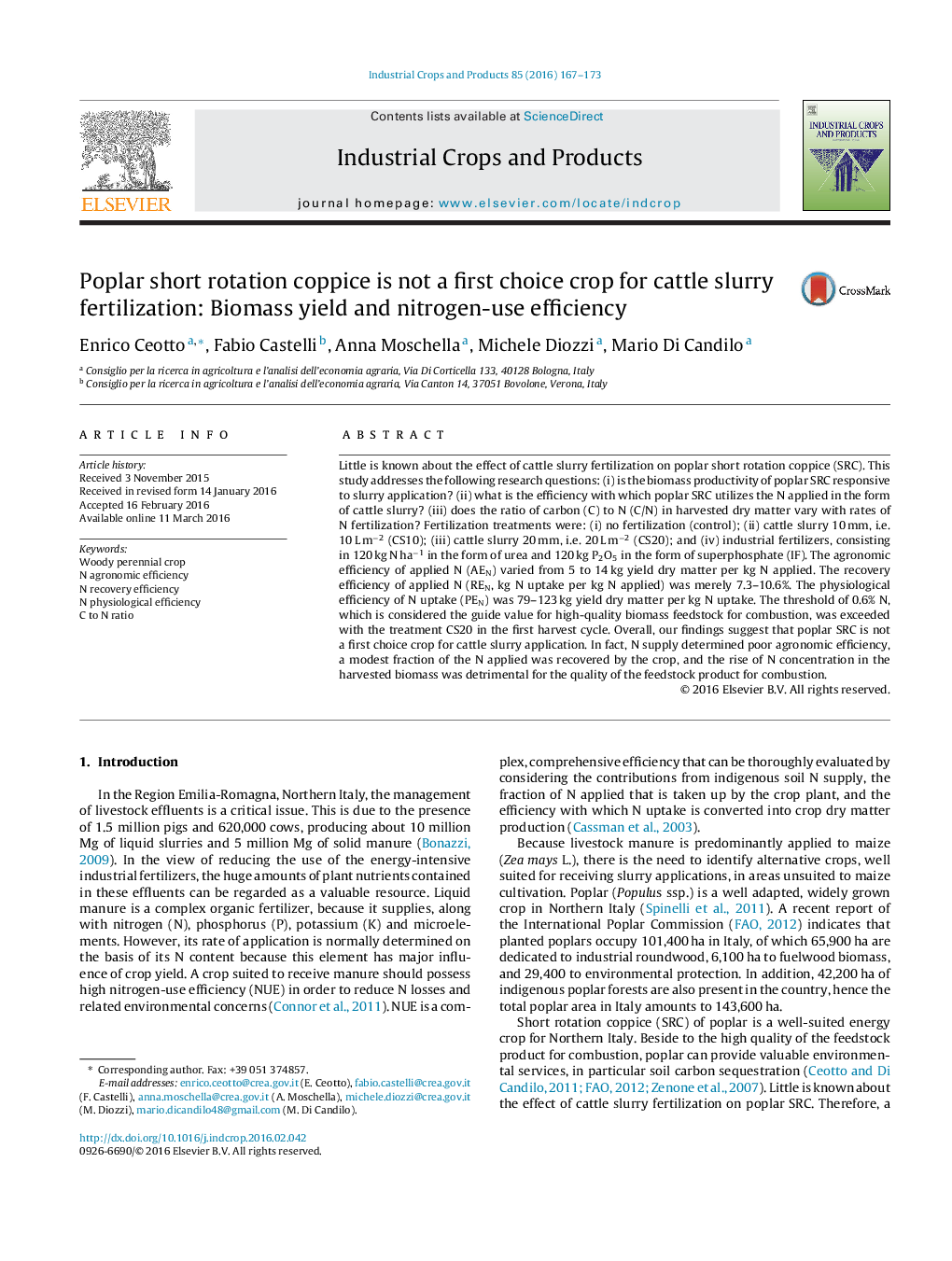| کد مقاله | کد نشریه | سال انتشار | مقاله انگلیسی | نسخه تمام متن |
|---|---|---|---|---|
| 4512495 | 1624825 | 2016 | 7 صفحه PDF | دانلود رایگان |
• The agronomic efficiency of applied N varied from 5 to 14 kg DM yield per kg N applied.
• The physiological efficiency varied from 79 to 123 kg DM yield per kg N uptake.
• The average indigenous soil N supply was about 100 kg N ha−1 per harvest cycle.
• The yield performance of the unfertilized poplar is encouraging.
• The rise of N content is detrimental for the quality of the feedstock product.
Little is known about the effect of cattle slurry fertilization on poplar short rotation coppice (SRC). This study addresses the following research questions: (i) is the biomass productivity of poplar SRC responsive to slurry application? (ii) what is the efficiency with which poplar SRC utilizes the N applied in the form of cattle slurry? (iii) does the ratio of carbon (C) to N (C/N) in harvested dry matter vary with rates of N fertilization? Fertilization treatments were: (i) no fertilization (control); (ii) cattle slurry 10 mm, i.e. 10 L m−2 (CS10); (iii) cattle slurry 20 mm, i.e. 20 L m−2 (CS20); and (iv) industrial fertilizers, consisting in 120 kg N ha−1 in the form of urea and 120 kg P2O5 in the form of superphosphate (IF). The agronomic efficiency of applied N (AEN) varied from 5 to 14 kg yield dry matter per kg N applied. The recovery efficiency of applied N (REN, kg N uptake per kg N applied) was merely 7.3–10.6%. The physiological efficiency of N uptake (PEN) was 79–123 kg yield dry matter per kg N uptake. The threshold of 0.6% N, which is considered the guide value for high-quality biomass feedstock for combustion, was exceeded with the treatment CS20 in the first harvest cycle. Overall, our findings suggest that poplar SRC is not a first choice crop for cattle slurry application. In fact, N supply determined poor agronomic efficiency, a modest fraction of the N applied was recovered by the crop, and the rise of N concentration in the harvested biomass was detrimental for the quality of the feedstock product for combustion.
Journal: Industrial Crops and Products - Volume 85, July 2016, Pages 167–173
